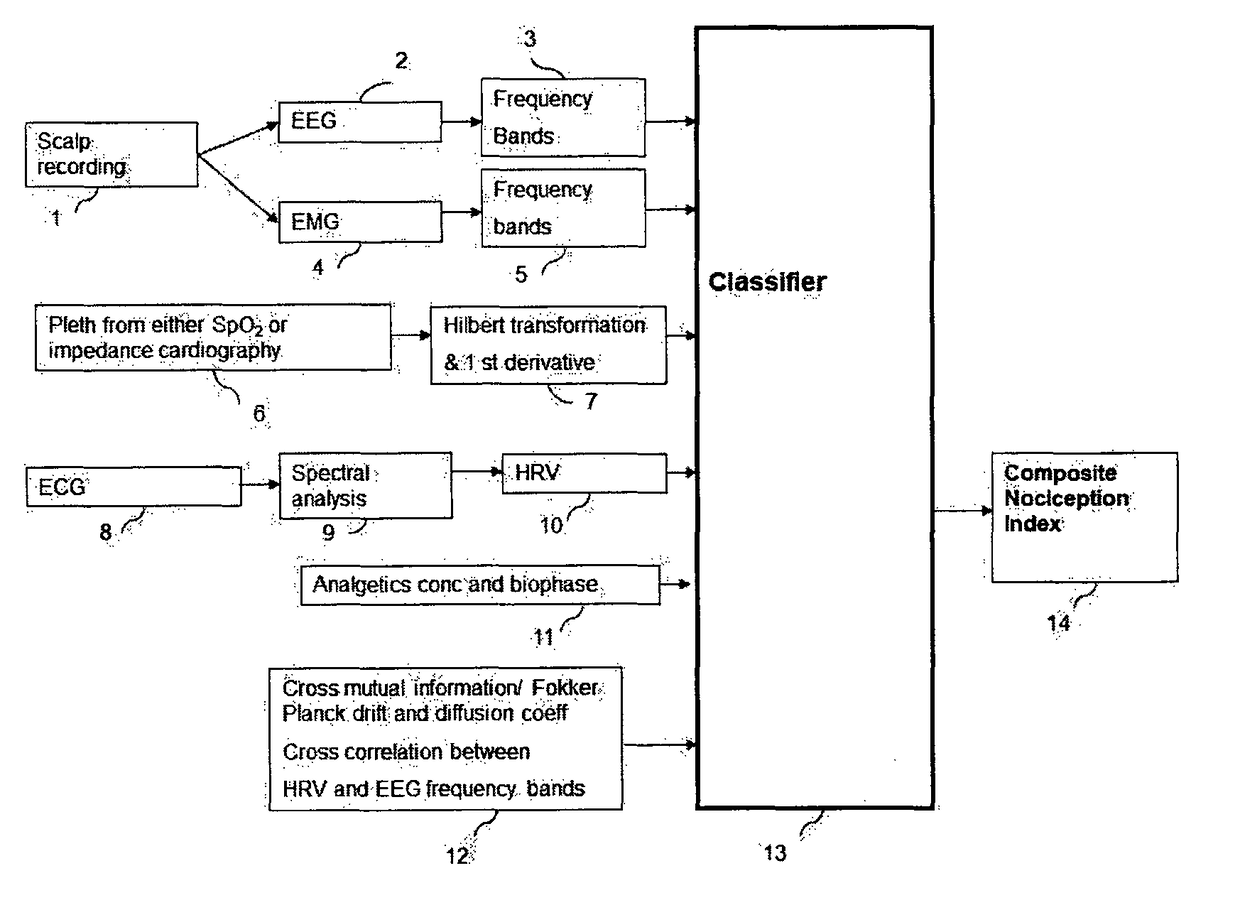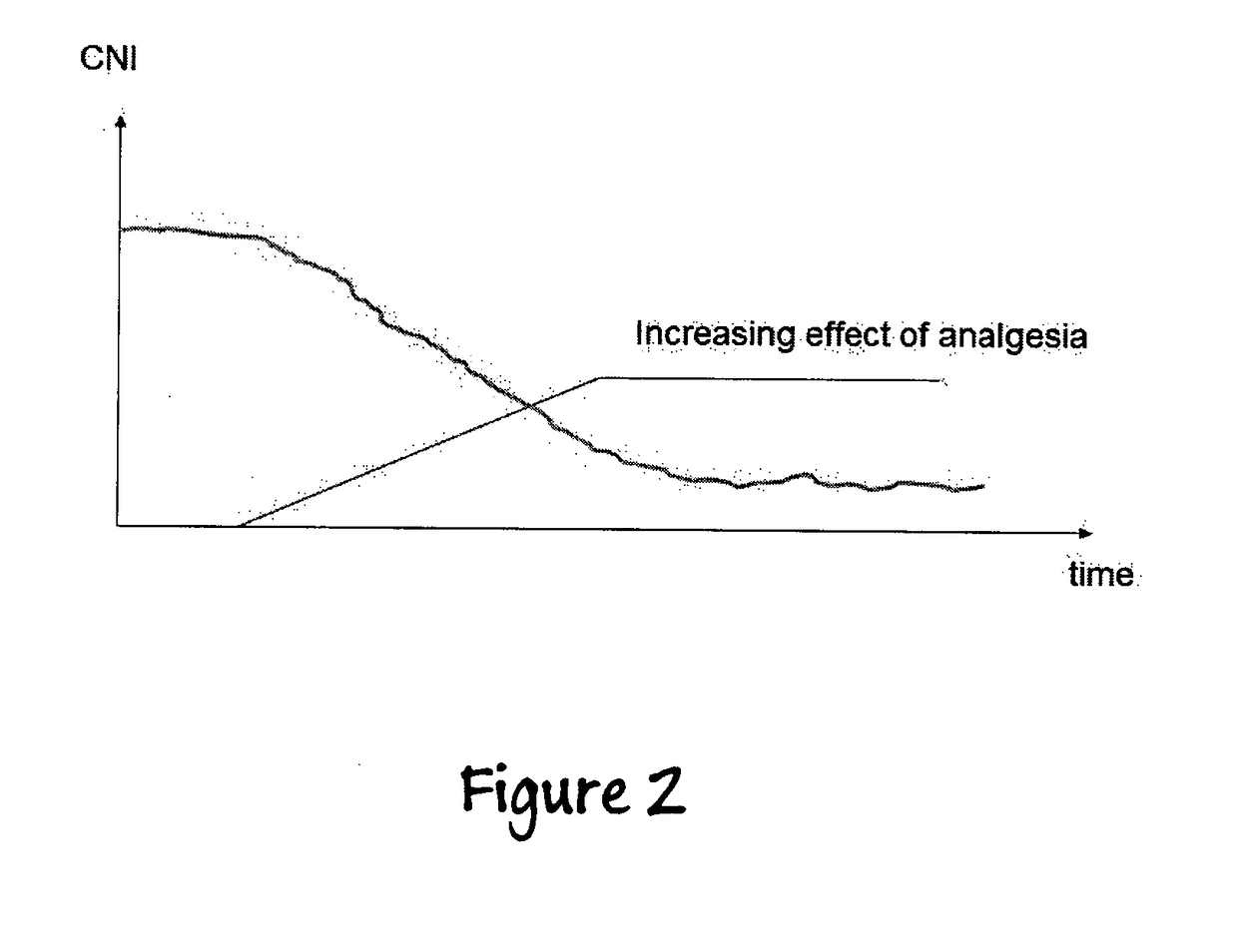Apparatus for the Assessment of the Level of Pain and Nociception During General Anesthesia Using Electroencephalogram, Plethysmographic Impedance Cardiography, Heart Rate Variability and the Concentration or Biophase of the Analgesics
a technology of nociception and anaesthesia, applied in the field of apparatus for the assessment of the level of pain and nociception during general anesthesia using electroencephalogram, plethysmographic impedance cardiography, heart rate variability, etc., can solve the problems of not always causing loss of consciousness and amnesia, patient may be paralyzed as well, and processing a small amoun
- Summary
- Abstract
- Description
- Claims
- Application Information
AI Technical Summary
Benefits of technology
Problems solved by technology
Method used
Image
Examples
Embodiment Construction
[0039]The following description is provided, so as to enable any person skilled in the art to make use of the invention and sets forth the best modes contemplated by the inventor of carrying out this invention. Various modifications, however, are adapted to remain apparent to those skilled in the art, since the generic principles of the present invention have been defined specifically to provide an apparatus for the assessment of the level of pain and nociception while awake or during general anesthesia. Thus a novel method for applying such apparatus has been obtained.
[0040]The term “EEG” refers herein after to electroencephalogram.
[0041]The term “EMG” refers hereinafter to facial electromyogram.
[0042]The term “HRV” refers hereinafter to heart rate variability.
[0043]The term “ECG” refers hereinafter to electrocardiogram.
[0044]The term “ICG” refers hereinafter to plethysmography by impedance cardiography.
[0045]The term “FFT” refers hereinafter to Fast Fourier Transform.
[0046]The ter...
PUM
 Login to View More
Login to View More Abstract
Description
Claims
Application Information
 Login to View More
Login to View More - R&D
- Intellectual Property
- Life Sciences
- Materials
- Tech Scout
- Unparalleled Data Quality
- Higher Quality Content
- 60% Fewer Hallucinations
Browse by: Latest US Patents, China's latest patents, Technical Efficacy Thesaurus, Application Domain, Technology Topic, Popular Technical Reports.
© 2025 PatSnap. All rights reserved.Legal|Privacy policy|Modern Slavery Act Transparency Statement|Sitemap|About US| Contact US: help@patsnap.com



